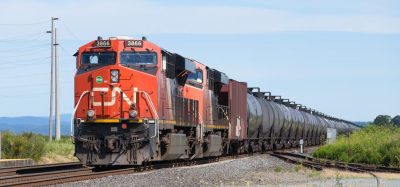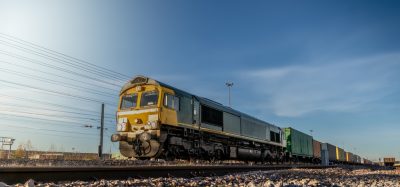How the Eurasian Economic Union affects railways
Posted: 12 May 2021 | Platon Guryanov | No comments yet
For Global Railway Review, Platon Guryanov, Head of the International Practice within the Legal Department of Russian Railways (RZD), provides an insight into how the EAEU affects rail transit across its member states, and the legislation that is driving its formation of a ‘single transport space’.


Russia, Belarus and Kazakhstan, on which territories the railway transit routes between Asia and Europe are stretched, alongside Kirgyzstan and Armenia, are bound within the Eurasian Economic Union (EAEU). The EAEU forms a single economic area based on international law rules and affects many spheres of business, including that of railway carriages.
The EAEU was created by the Treaty on the Eurasian Economic Union, signed on 29 May 2014, providing for a common market for goods, services, capital and labour.
The single customs area abolished customs borders between member states and imposed the unified customs tariff. The uniform customs rules are set up by the international treaty – The Customs Code of the EAEU.
This not only makes the transportation of goods faster and cheaper, but also affects the use of foreign railway wagons. Upon entering the EAEU’s territory, they are allowed to remain there for up to 90 days, during which they can be used one time for the inland haul without payment of duties.
Union law
The activities of the EAEU member states are governed by the law of the EAEU, which includes the Treaty on the EAEU, international treaties of the EAEU with third parties, and decisions and orders of the Supreme Eurasian Economic Council, the Eurasian Intergovernmental Council and the Eurasian Economic Commission.
The EAEU was created by the Treaty on the Eurasian Economic Union, signed on 29 May 2014, providing for a common market for goods, services, capital and labour.
Section XXI ‘Transport’ of the treaty directly concerns that one of the main tasks of a coordinated transport policy is the creation of a common market for transport services, and one of its main priorities is the formation of a ‘single transport space’.
Nevertheless, the treaty contains peculiarities regarding rail transport, which allow it to preserve its special economic and legal status as a natural monopoly. Concepts such as ‘common market for transport services’, ‘common transport space’ and ‘liberalisation of transport services’ to be applied to railway transport in a limited sense and only in certain sections of the railway transport infrastructure near the state border, for instance.
Specific railway provisions of the treaty regulate two major issues: the access of carriers from one country to the services of the railway transport infrastructure, and tariffs.
Access should be granted to foreign rail carriers from the EAEU member states exclusively on the border sections of the railway infrastructure. The length of these sections is to be determined by the infrastructure owner, based on the length of the locomotive’s turnover haul.
Despite the fact that one of the basic principles of admission is the equality of requirements for carriers, the rules provide certain privileges for the national (network-wide) carrier in the allocation of the capacity of infrastructure sections.
A foreign carrier, when entering the infrastructure sections, must have a license and a safety certificate issued by the authorised bodies of the state where the infrastructure is located.
Special rules of the treaty regulate the procedure for the execution of the contract for the provision of infrastructure services.
Specific railway provisions of the treaty regulate two major issues: the access of carriers from one country to the services of the railway transport infrastructure, and tariffs.
As railway tariffs belong to the regulated sphere in all EAEU member states, the treaty stipulates what kind of tariffs should be applied to international railway carriages. For transit traffic between the EAEU member states and to third countries through seaports, it should be an internal tariff of the respective state. However, member states bear an obligation to harmonise their internal tariffs.
For transit traffic to third countries through land border crossings of the EAEU member states, the Tariff Policy of the CIS Member States for the Transportation of Goods in International Transportation is to be applied. They adopt the Tariff Policy once a year at the tariff conference of the parties, to the Tariff Agreement of the Railway Administrations (Railways) of the Member States of the Commonwealth of Independent States of 17 February 1993.
The Treaty sets a right of carriers to establish tariffs for services for the carriage of goods within the price limits established by the authorised bodies of the member states (tariff corridor) in order to increase the competitiveness of railway transport.
Cooperation
The EAEU provides a platform for interaction between the business community, government bodies of the participating countries and the Eurasian Economic Commission (EEC, the permanent regulatory body of the EAEU) – namely the Advisory Subcommittee on Railway Transport. It considers drafts amendments to the EAEU acts, searches for the bottlenecks hindering seamless international transportation and prepares appropriate recommendations to the EEC.
It is also worth noting that the EEC is considering the possibility of developing transport corridors passing through the territories of the participating states. A programme for the promotion of an ecosystem of digital transport corridors has been prepared. Their development is expected within the framework of the draft EAEU roadmap for the implementation of the transport policy for 2021-2023, which is planned to be approved in the first half of 2021. The main goal, thereof, is the introduction of advanced digital technologies in order to speed up transit.


This article reflects a private opinion, not that of the Russian Railways or of Russell Publishing Ltd.
Stay Connected with Global Railway Review — Subscribe for Free!
Get exclusive access to the latest rail industry insights from Global Railway Review — all tailored to your interests.
✅ Expert-Led Webinars – Gain insights from global industry leaders
✅ Weekly News & Reports – Rail project updates, thought leadership, and exclusive interviews
✅ Partner Innovations – Discover cutting-edge rail technologies
✅ Print/Digital Magazine – Enjoy two in-depth issues per year, packed with expert content
Choose the updates that matter most to you. Sign up now to stay informed, inspired, and connected — all for free!
Thank you for being part of our community. Let’s keep shaping the future of rail together!







